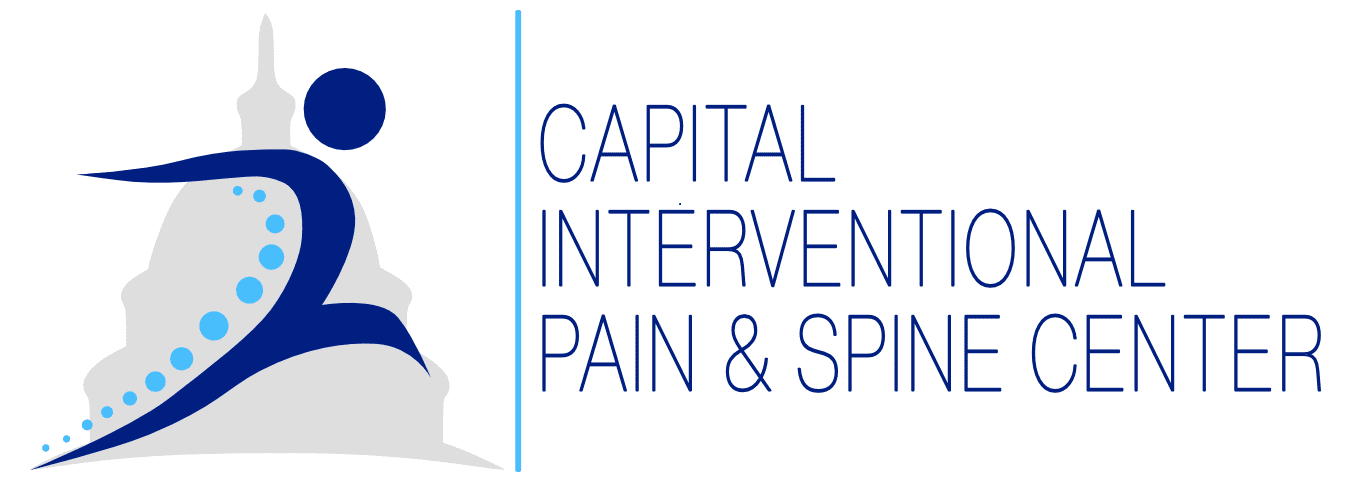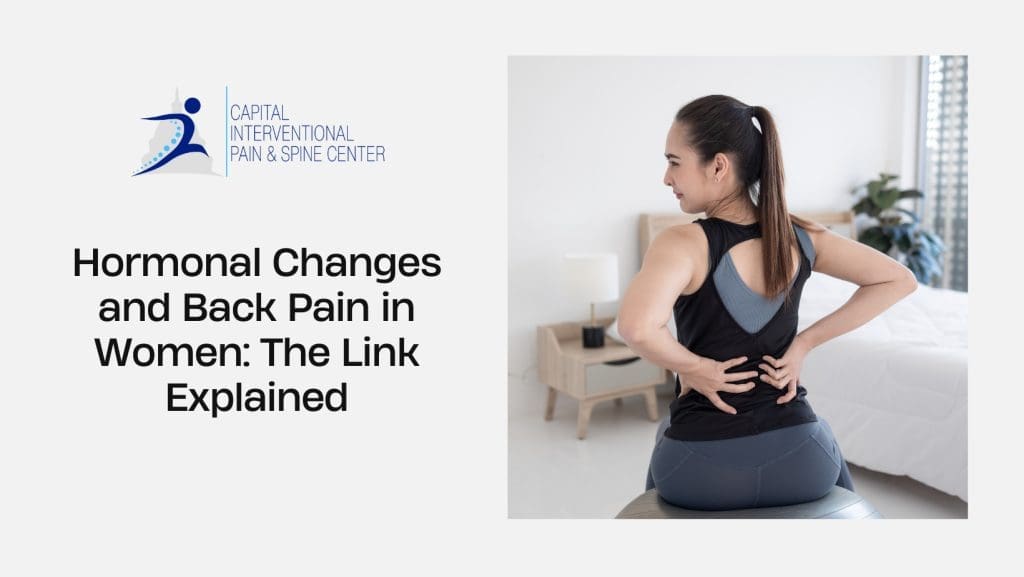Back pain is one of the most common ailments experienced by women at various stages of life. Whether it’s related to pregnancy, menopause, or other hormonal fluctuations, the connection between hormonal changes and back pain is undeniable. Understanding how these changes influence the musculoskeletal system can help women better manage their pain and seek appropriate care from a pain & spine specialist in Maryland.
In this blog, we’ll explore the relationship between hormonal changes and back pain in women, how different life stages contribute to this issue, and how a pain relief center can offer effective treatments to alleviate back pain.
The Role of Hormones in Back Pain
Hormones regulate body functions like mood, metabolism, and even pain perception. For women, hormonal fluctuations that occur during puberty, menstruation, pregnancy, and menopause can significantly impact various parts of the body, particularly the spine and back muscles. The most notable hormones involved in back pain are estrogen, progesterone, and relaxin.
1. Estrogen and Back Pain
Estrogen is a crucial hormone in maintaining bone health. Low estrogen levels, such as during menopause, lead to conditions like osteoporosis (Mayo clinic). Osteoporosis weakens the bones, especially the spine. When a vertebra fractures, it can result in severe back pain.
Estrogen also affects the ligaments and joints. During pregnancy or menopause, the body’s ligaments can become looser, leading to instability in the spine and surrounding structures, further increasing the risk of back pain.
2. Progesterone and Back Pain
Progesterone is another key hormone in women’s reproductive health. During the menstrual cycle, it helps to prepare the body for pregnancy by relaxing the uterus and other smooth muscles. However, when progesterone levels fluctuate or become imbalanced, they can also affect the back muscles. Progesterone can cause an increase in fluid retention, leading to swelling in the tissues surrounding the spine and contributing to back discomfort.
Elevated progesterone levels during pregnancy can also relax the ligaments and muscles in the pelvic area, changing the way the body carries its weight. This shift can strain the lower back and cause discomfort or pain.
3. Relaxin and Back Pain
Relaxin is a hormone formed during pregnancy. This hormone plays a significant role in changing the biomechanics of a woman’s body. As the pelvic region becomes more flexible, it may cause instability in the lower back. Additionally, the body’s center of gravity shifts as the baby grows, further increasing pressure on the lower back and contributing to pain and discomfort.
Hormonal Changes Across Different Life Stages
Hormonal changes can affect the back differently depending on a woman’s age and life stage. Let’s examine how different phases in a woman’s life can contribute to back pain.
1. Puberty and Menstrual Cycle
The onset of puberty marks the beginning of hormonal fluctuations that influence many aspects of a woman’s body, including the spine. During such phases, back pains occur. These fluctuations may cause changes in fluid retention, muscle spasms, and cramping in the lower back.
In addition to menstrual cycles, conditions like dysmenorrhea (painful periods) or endometriosis can also lead to chronic back pain.
2. Pregnancy
Pregnancy is one of the most significant periods in a woman’s life regarding hormonal changes. As mentioned earlier, the increase in progesterone and relaxin during pregnancy causes ligaments and muscles to relax, which can lead to lower back pain. The growing baby also shifts a woman’s center of gravity, increasing pain in the lower back and pelvis. As pregnancy progresses, women may also experience muscle strain, poor posture, and changes in gait, all of which can contribute to back discomfort.
Sacroiliac joint pain is common in pregnancy in some cases. The sacroiliac joints can become more mobile due to the increase in relaxin, leading to joint instability and pain.
3. Perimenopause and Menopause
Perimenopause can cause a significant shift in a woman’s hormonal balance. Estrogen levels fall below normal, leading to a quick decrease in bone density. This bone loss can result in osteoporosis, which makes the bones brittle and more susceptible to fractures.
In addition to bone density loss, many women experience joint pain due to decreased estrogen. The reduction in estrogen can also affect collagen production, contributing to joint flexibility. As a result, some women may experience more frequent or intense back pain during this time.
4. Postmenopause
Even after menopause, the drop in estrogen continues to affect women’s musculoskeletal health. Over time, the loss of estrogen leads to a further decline in bone density, making fractures more likely. Women may also experience muscle weakness and joint pain, which can further contribute to chronic back pain.
Managing Back Pain Related to Hormonal Changes
If you’re experiencing back pain related to hormonal fluctuations, several strategies and treatments are available to help manage the discomfort.
1. Hormone Replacement Therapy (HRT)
For women in perimenopause or menopause, HRT can help alleviate back pain related to hormonal changes. As Per ACOG by replenishing estrogen levels, HRT can help improve bone density, reduce joint pain, and alleviate other menopause-related symptoms.
However, HRT is not suitable for all women, and it’s important to discuss the risks and benefits with your physician.
2. Physical Therapy and Exercise
A physical therapist can facilitate your movements through exercises tailored to your condition. Strengthening exercises may target the core, lower back, and pelvic muscles, which can help stabilize the spine and reduce pain.
3. Medications and Pain Management
For women experiencing severe back pain due to hormonal changes, medication may be necessary. Medicines like ibuprofen or acetaminophen can provide temporary relief, while stronger medications may be prescribed in more severe cases. A pain & spine specialist can provide personalized help for back pain.
4. Lifestyle Modifications
Maintaining a weight and posture can help reduce back pain. It’s also important to stay active and avoid unnecessary strain on your back. A pain and spine specialist can advise adjusting your daily habits to minimize back discomfort.
Conclusion
The connection between hormonal changes and back pain in women is complex, involving the interplay of various hormones, including estrogen, progesterone, and relaxin. These hormonal fluctuations, which occur at different stages of a woman’s life—puberty, pregnancy, menopause, and beyond—can contribute to back pain and discomfort. Understanding these changes and how they affect the musculoskeletal system can help women better manage their symptoms and seek appropriate treatment.
If you’re experiencing back pain related to hormonal changes, seeking the expertise of a pain & spine specialist at Capital Interventional Pain & Spine Center is a great place to start. Our Double Board-certified Physician can help you with your pain woes.
References
- American College of Obstetricians and Gynecologists. “Hormone Replacement Therapy.” https://www.acog.org/
- Mayo Clinic. “Osteoporosis.” https://www.mayoclinic.org/

